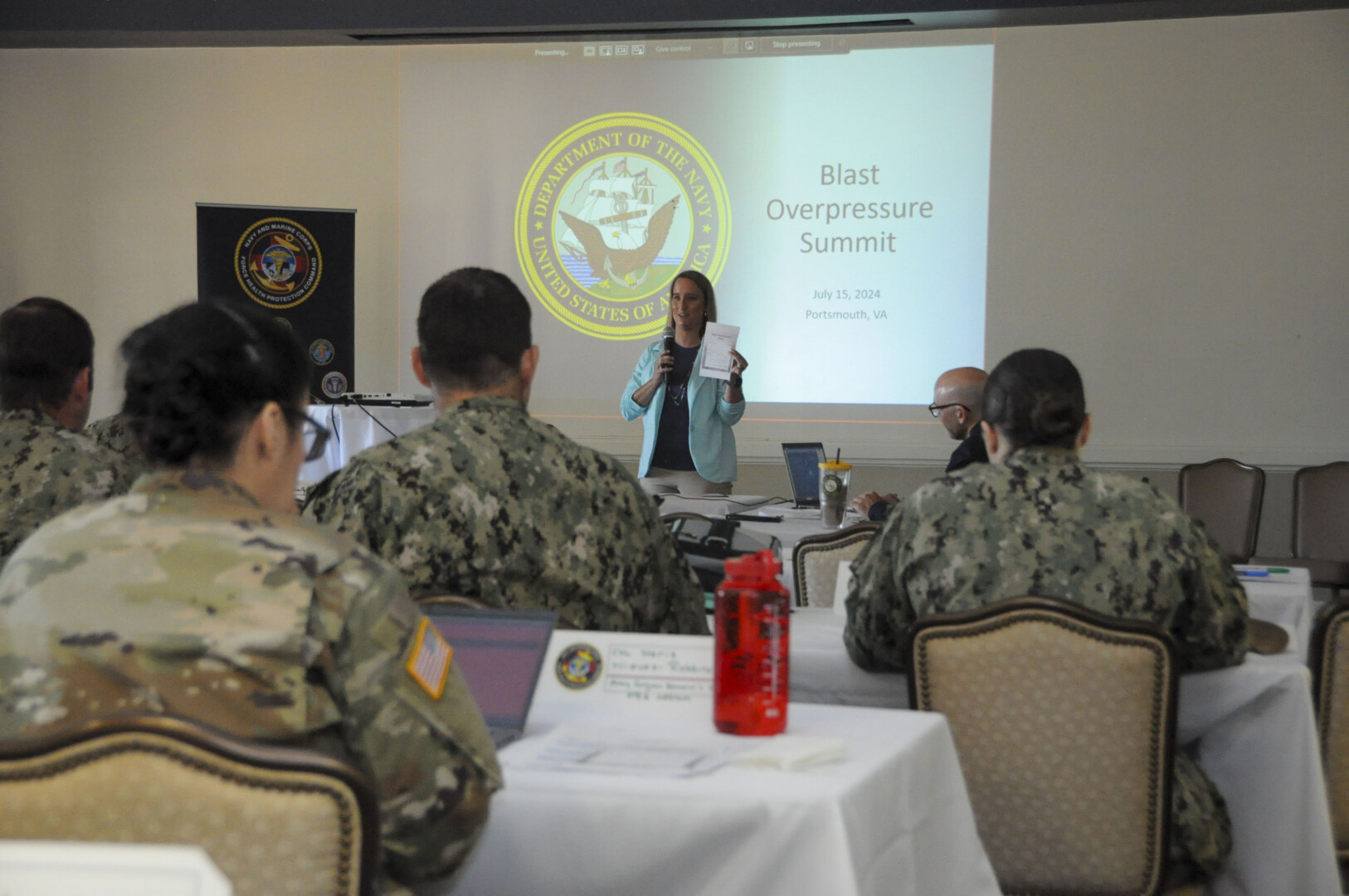Marine Corps
Navy Summit Addresses Blast Overpressure Safety and Warfighter Brain Health

The Navy’s initiative to address concerns related to blast overpressure (BOP) took center stage at a recent summit, aimed at enhancing the safety and health of warfighters. The event, hosted by the Navy and Marine Corps Force Health Protection Command (NMCFHPC), featured remarks from Hon. Meredith Berger, Assistant Secretary of the Navy for Energy, Installations, and Environment, and Mr. Peter Lynch, Deputy Assistant Secretary of the Navy for Safety.
A Unified Effort for Warfighter Brain Health
“I am grateful to the experts and operators that are in the room today for dedicating your brain power and your horsepower to something that is critical: warfighter brain health,” Berger said. The summit is part of a broader initiative to centralize and streamline BOP safety efforts within the Department of the Navy (DON). Berger emphasized the importance of proactive measures, such as reducing unnecessary exposures, monitoring symptoms, encouraging those who seek help, and ensuring the availability of medical treatment to maintain mission readiness.
Streamlining Communication and Coordination
In response to previous gaps in communication, the DON began holding monthly BOP synchronization meetings in September 2023, growing from 25 to over 150 participants, including leadership, medical professionals, safety officers, and subject matter experts. The Navy BOP summit aimed to develop a plan of action and milestones for drafting and implementing DON BOP policy. The event also served to enhance communication among all parties, synchronize efforts, identify gaps, and create a Navy-specific BOP policy aligned with upcoming DOD guidelines.
Enhancing Operational Commands’ Understanding
“As we move forward, our goal is to provide a consistent message that will help operational commands understand the risks of BOP exposure and communicate effective risk mitigation strategies,” said Jena Brunson, an industrial hygienist with NMCFHPC. Brunson’s team, the Acquisition Technical Support Division (ATS), plays a crucial role as the subject matter experts on industrial hygiene aspects of BOP hazards. The team is establishing a comprehensive plan for exposure monitoring, leveraging the existing field presence of industrial hygiene professionals who are already monitoring other hazards of weapon use.
A Multidisciplinary Approach
The ATS team supports both the acquisition testing community and field industrial hygienists. They assess the health hazards of weapon systems using exposure data collected during the acquisition process and support field industrial hygienists collecting data on weapons systems already in use. “Our goal isn’t just to document the exposure but to figure out ways to reduce it,” Brunson explained.
Aligning with Surgeon General’s Key Lines of Effort
The Navy BOP initiative aligns with several key lines of effort (LOEs) from the Surgeon General:
- LOE 2: Increase Sailor and Marine Deployability by ensuring personnel are well-protected from BOP risks.
- LOE 3: Provide Quality Healthcare and Patient Safety Programs by integrating the latest research and safety protocols into BOP management strategies.
- LOE 4: Recruit and Retain Navy Medicine Shipmates by demonstrating a commitment to safeguarding the health and well-being of Navy personnel.
Maximizing Readiness
The mission of NMCFHPC is to maximize readiness through force health protection plan strategies and solutions for current and potential public health threats. Berger is responsible for providing oversight and policy for various aspects, including energy and climate resilience, infrastructure sustainment, and occupational health.
Conclusion
The Navy’s comprehensive approach to addressing BOP risks showcases a commitment to warfighter brain health and overall safety. This proactive stance aims to enhance operational effectiveness, foster trust within the ranks, and maintain mission readiness.
For more information about the Navy’s Acquisition Technical Support Division and related resources, visit NMCFHPC’s BOP page.





